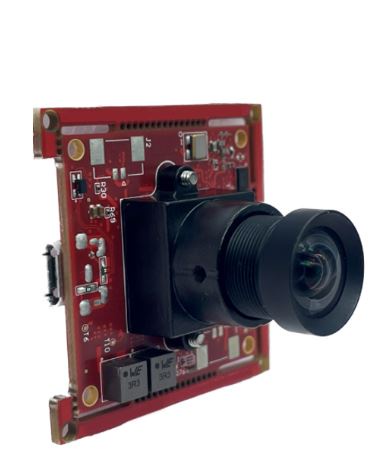The realm of computer science, particularly the ever-evolving field of computer vision, relies heavily on capturing clear and accurate visual data. However, achieving this goal can be challenging in less-than-ideal lighting conditions. This is where Low Light USB Cameras come into play, offering a powerful solution for researchers, developers, and hobbyists alike.
Unveiling the Power of Low Light USB Cameras
Traditional USB cameras often struggle in low-light environments, producing grainy and noisy images. This significantly hinders the ability to extract meaningful information from the captured footage. Low Light USB Cameras address this limitation by incorporating advanced image sensors and processing techniques. These specialized sensors boast higher sensitivity to light, allowing them to capture clear images even in dimly lit settings.
Here's a breakdown of the key features that differentiate Low Light USB Cameras from their standard counterparts:
-
High Sensitivity Image Sensors: Low light cameras typically feature CMOS (complementary metal-oxide semiconductor) sensors with larger pixel sizes or backside illumination (BSI) technology. These advancements enhance light capture capabilities, resulting in brighter and clearer images in low-light conditions.
-
Improved Signal-to-Noise Ratio (SNR): Low light cameras often implement noise reduction algorithms to minimize unwanted visual artifacts that plague images captured in low-light environments. This translates to cleaner and more detailed footage, crucial for accurate computer vision tasks.
-
Automatic Gain Control (AGC): This feature automatically adjusts the camera's gain (amplification) in response to varying light levels. This ensures optimal image quality across different lighting conditions, minimizing the need for manual adjustments.
Applications of Low Light USB Cameras in Computer Science
The ability to capture clear visuals in low-light scenarios opens doors to a multitude of applications within computer science:
-
Machine Learning and Image Recognition: Low light cameras can be instrumental in training machine learning models on datasets captured in real-world, low-light environments. This enhances the robustness and generalizability of the models, allowing them to perform accurately in diverse lighting conditions.
-
Object Tracking and Surveillance: Security systems and autonomous robots often operate in low-light settings. Low light USB cameras enable them to effectively track objects and monitor environments, ensuring continuous operation regardless of lighting conditions.
-
Biometrics and Medical Imaging: Low light cameras can be used in low-light medical environments for capturing clear images of eyes or skin for biometric identification or medical diagnosis.
-
Astronomy and Night Vision Applications: For researchers and hobbyists in astronomy, low light cameras can capture faint celestial objects with greater clarity. Similarly, they can be used for night vision applications, enabling clear observation in low-light scenarios.
Selecting the Right Low Light USB Camera
With an array of Low Light USB Cameras available, choosing the right one for your project requires careful consideration of several factors:
-
Resolution: Consider the level of detail required in your captured images. Higher resolutions (e.g., 1080p, 4K) offer sharper visuals but come at the expense of file size and processing power demands.
-
Frame Rate: The frame rate determines the smoothness of your video footage. Higher frame rates (e.g., 30fps, 60fps) are ideal for capturing fast-moving objects.
-
Sensor Size and Technology: Larger sensor sizes and BSI technology generally translate to better low-light performance.
-
Connectivity: USB 3.0 offers faster data transfer speeds compared to USB 2.0, crucial for handling high-resolution video streams.
-
Software Compatibility: Ensure the camera is compatible with your operating system and the software you plan to use for capturing and processing images.
Low Light USB Cameras represent a significant advancement in the realm of computer vision. Their ability to capture clear and detailed images in low-light environments empowers researchers, developers, and hobbyists to push the boundaries of their projects. By carefully considering your specific needs and the camera's features, you can select the ideal Low Light USB Camera to elevate your computer vision endeavors.
More Details,
https://www.vadzoimaging.com/product/imx291-low-light-1080p-usb-camera
#lowlightusbcamera #usbcamera #camera #technology


No comments yet